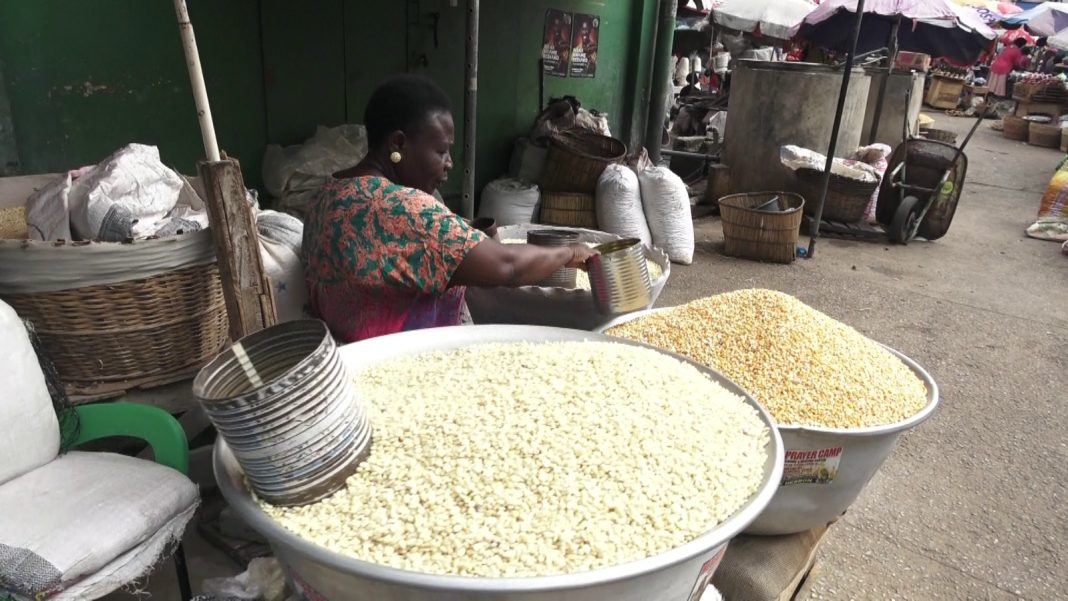Ghanaians are expressing mixed reactions to the assertion by Finance Minister Dr. Cassiel Ato Forson that food prices are declining.
In the mid-year budget review presented last Thursday, the Minister highlighted reductions in the cost of major staples like maize and onions.
While some acknowledge marginal declines in select food items, many say the overall cost of feeding their families remains high and argue the government’s figures do not reflect their day-to-day realities in the marketplace.
“I haven’t seen any reduction in food prices. Kokonte has become expensive. GHȼ5 gets you very little now,” said Mary Addy, a consumer interviewed by Citi Business News.

Others, like Georgina Nkansah, questioned the selective focus of the Minister’s data, stating, “GHȼ1,000 can’t buy what it used to. Now it takes more than GHȼ2,000 to stock a household.”
However, some traders and consumers admit that prices of specific items like rice, oil, and maize have eased.
“A 5kg bag of rice now sells for GHȼ80 instead of GHȼ120. That’s progress,” said Beatrice Atswei Adjetey, while maize sellers at Kaneshie Market confirmed further price declines ahead of the harvest season.
A sack of maize that cost GH¢1,600 in January now sells for about GH¢1,300 and could fall further with the arrival of new stock.

But traders say low consumer demand remains a concern.
“Prices are fair, but there’s no money in circulation,” noted Naa Odey, Deputy Queen-mother of maize sellers at Kaneshie.
The kokonte market tells a similar story.

Though prices have dropped slightly, transportation remains a major cost driver. “We’re urging government to reduce fuel prices to ease transport burdens,” said kokonte seller Mary Quaicoe.
Palm fruit and onions have also seen price drops – but traders attribute this more to seasonal harvests than economic policy.
“Palm fruit is now GHȼ30–GHȼ35 per olonka, down from GHȼ40, but that’s normal during this season,” said Jane Annan, a palm fruit seller.

At Agbogbloshie, onion prices are down to GHȼ70 per paint bucket, with bulk baskets selling for GHȼ250–GHȼ270.
“The rest is sold to customers buying in smaller quantities like GHȼ10 and GHȼ5,” Abigail Frimpong, an onion seller added.
While the Finance Minister remains optimistic about the trend, many market observers believe sustained price reductions will require policy support for improved food transportation, lower fuel costs and better access to credit for traders.
